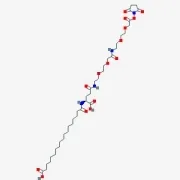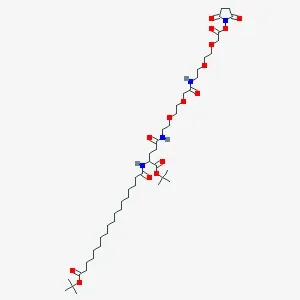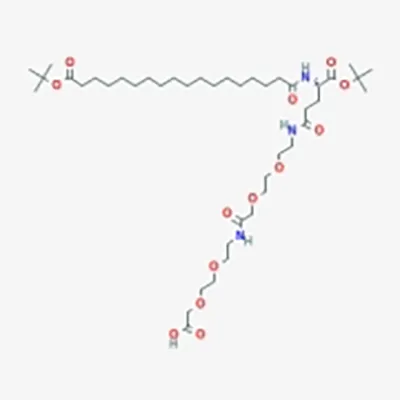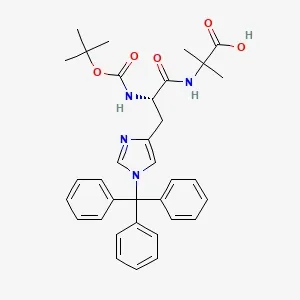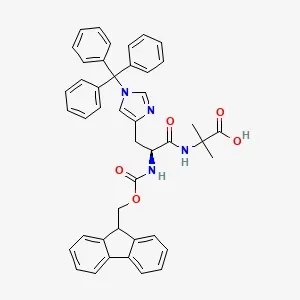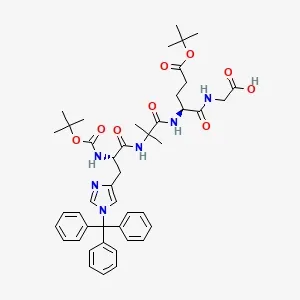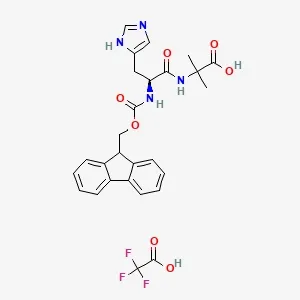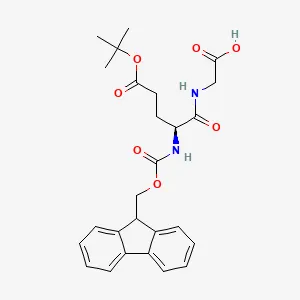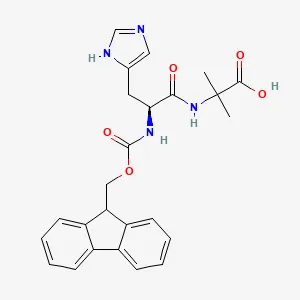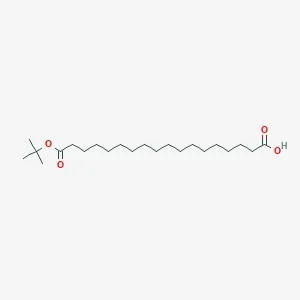
Amino Acids & Derivatives for Peptide Synthesis
18-(tert-Butoxy)-18-oxooctadecanoic acid
Used as a side chain component in peptide synthesis, 18-(tert-Butoxy)-18-oxooctadecanoic acid (CAS No. 843666-40-0, molecular formula C₂₂H₄₂O₄) is a white solid containing a tert-butyl ester group that increases its hydrophobicity. This property makes it especially useful in the development of lipid-modified peptides, where enhanced membrane interaction or prolonged half-life is desired. It’s widely used in the synthesis of GLP-1 receptor agonists such as Semaglutide and Tirzepatide, contributing to the design of stable, long-acting structures. The compound is packaged in 25 kg fiber drums and should be stored in sealed containers at room temperature, in a dry environment to preserve its integrity.
- CAS No.: 843666-40-0
- Molecular Formula: C₂₂H₄₂O₄
- Purity: 99% min

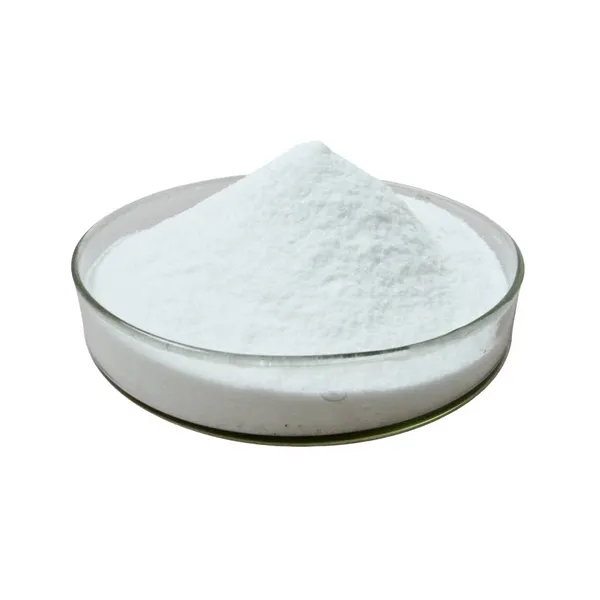
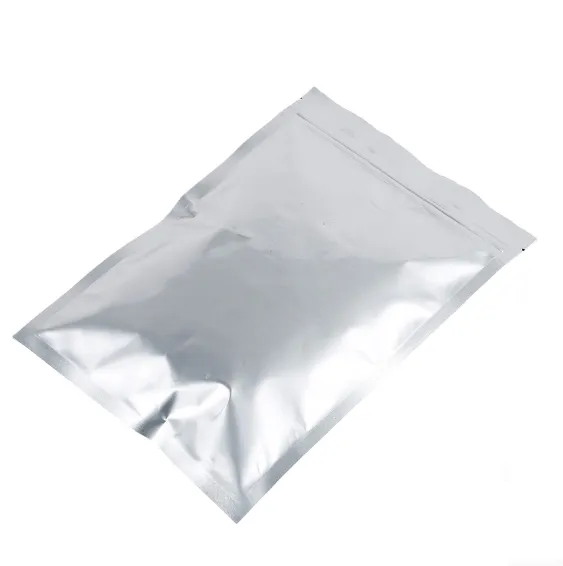

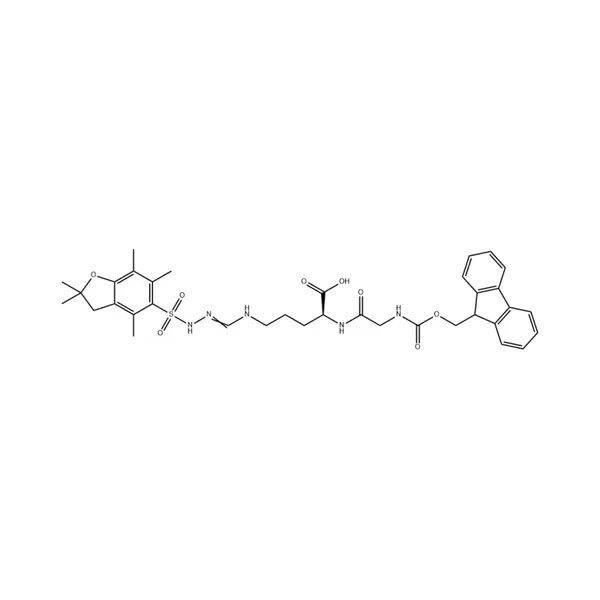
![Fmoc-L-Lys[Oct-(otBu)-γ-Glu-(otBu)-AEEA-AEEA]-OH](products/2-2-1-fmoc-l-lys-oct-otbu_01.webp)
